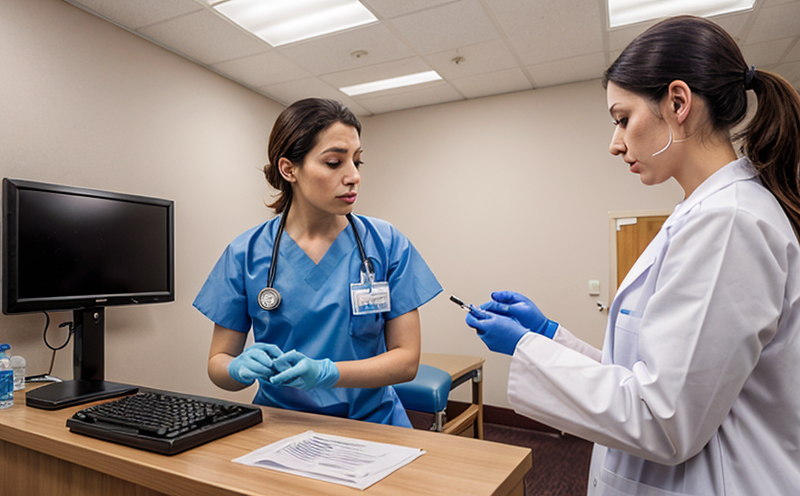Veterinary Pharmacovigilance Toxicology Testing in Food Animals
In the realm of veterinary pharmacovigilance toxicology testing within food animals, ensuring the safety and efficacy of pharmaceuticals is paramount. This service focuses on identifying potential adverse effects of drugs used in livestock to ensure that they do not pose risks to human health through contaminated food products.
The process involves several critical steps. Initially, we assess the need for pharmacovigilance testing based on clinical observations and literature reviews. We then select appropriate animal models that closely resemble the intended use of the drug in livestock. This ensures that our findings are relevant and applicable to real-world scenarios.
Specimen preparation is meticulous; it involves collecting samples from various parts of the animals, including blood, tissue, and urine. These specimens undergo rigorous laboratory analysis using advanced analytical techniques such as liquid chromatography-mass spectrometry (LC-MS) for precise quantification of drug residues.
The scope includes not only identifying the presence but also determining the concentration levels of drugs in food animals. This helps in establishing safe withdrawal periods to prevent residue accumulation in meat, milk, and other edible products. Compliance with international standards like ISO 15217-1 ensures that our testing meets global quality benchmarks.
Our methodology is comprehensive and includes both preclinical trials and post-market surveillance. Preclinical trials involve extensive in-vivo studies to understand how the drug behaves within the animal’s body, while post-market surveillance monitors for any unforeseen side effects after the drug has been approved for use.
The acceptance criteria are stringent, ensuring that only safe levels of drugs reach market shelves. This not only protects consumers but also maintains trust in the agricultural industry. The service is designed to support regulatory compliance and ensure public health safety.
Scope and Methodology
- Preclinical Trials: In-vivo studies on animal models to understand drug behavior.
- Post-Market Surveillance: Monitoring for side effects after drug approval.
- Specimen Collection: Blood, tissue, and urine samples from various parts of the animals.
- Laboratory Analysis: LC-MS for precise quantification of drug residues.
The process is designed to ensure that only safe levels of drugs reach market shelves. This not only protects consumers but also maintains trust in the agricultural industry. The service supports regulatory compliance and ensures public health safety.
Why Choose This Test
Selecting this test is crucial for several reasons. First, it provides a comprehensive understanding of drug behavior within livestock, ensuring that they do not pose risks to human health through contaminated food products. Second, the service supports regulatory compliance with international standards like ISO 15217-1.
Third, pharmacovigilance toxicology testing is essential for maintaining consumer trust in agricultural products. By identifying and mitigating potential risks early on, we contribute to a safer food supply chain. Lastly, this service plays a vital role in protecting the reputation of livestock producers and ensuring their compliance with health regulations.
Competitive Advantage and Market Impact
- Innovative Approach: Utilizing cutting-edge LC-MS technology for precise quantification.
- Comprehensive Monitoring: Covering both preclinical trials and post-market surveillance.
- Regulatory Compliance: Meeting international standards like ISO 15217-1.
- Consumer Trust: Ensuring safe levels of drugs in food products.
This service offers a competitive edge by providing comprehensive and accurate data that supports regulatory compliance. It enhances the reputation of livestock producers and ensures public health safety. Our approach is innovative, leveraging advanced technology to ensure precise quantification and reliable results.





